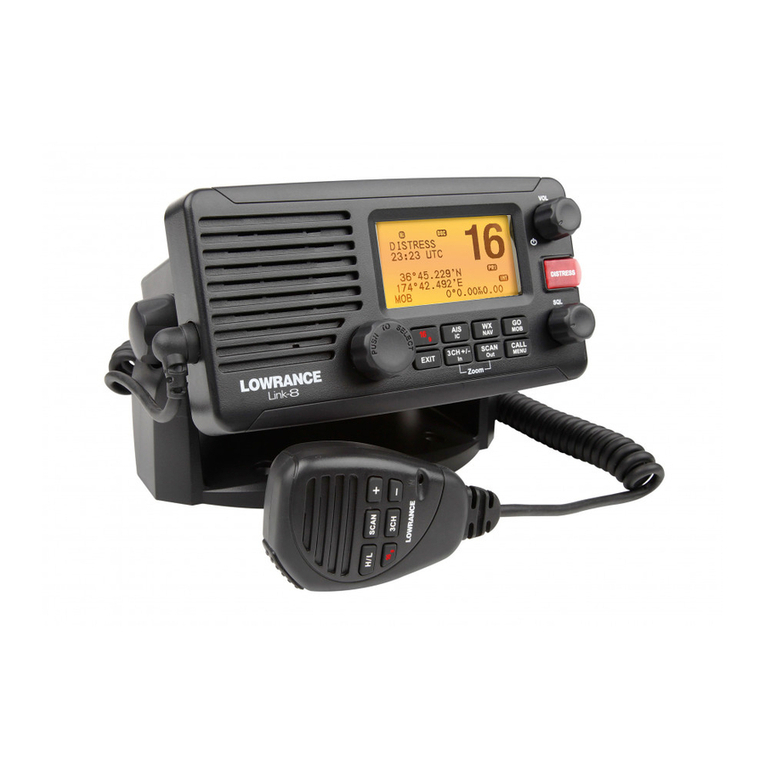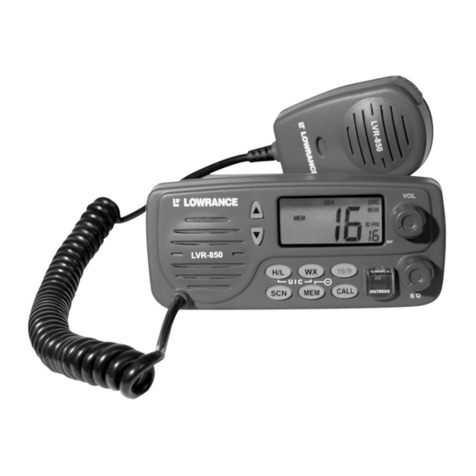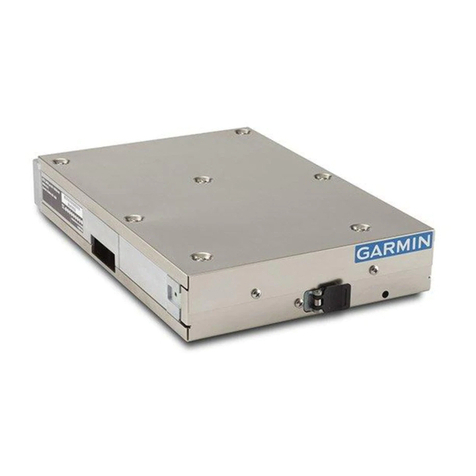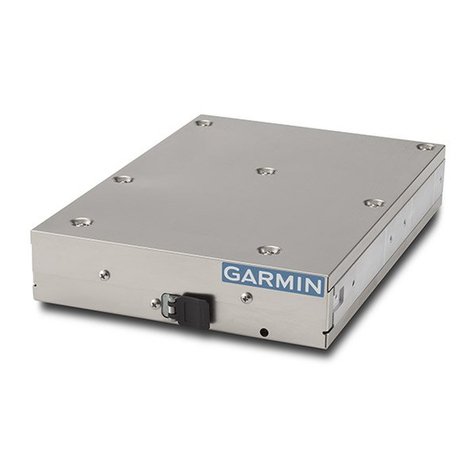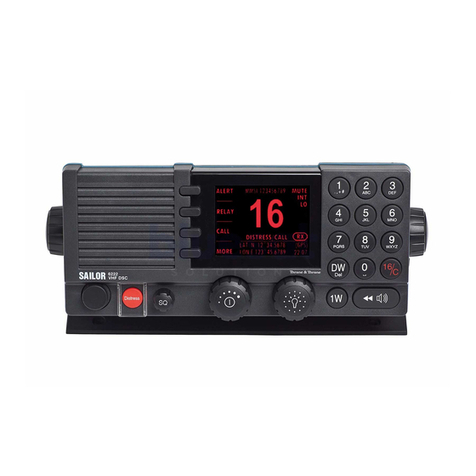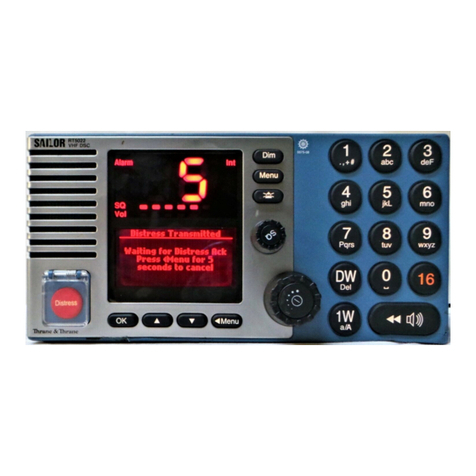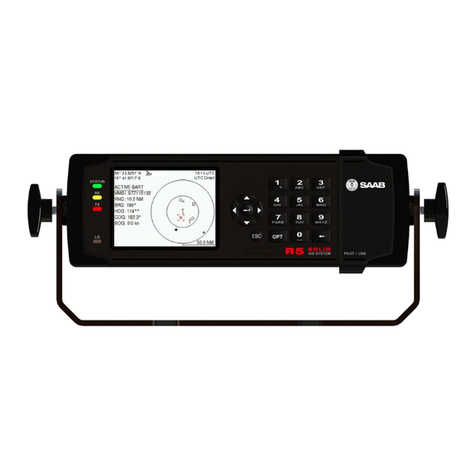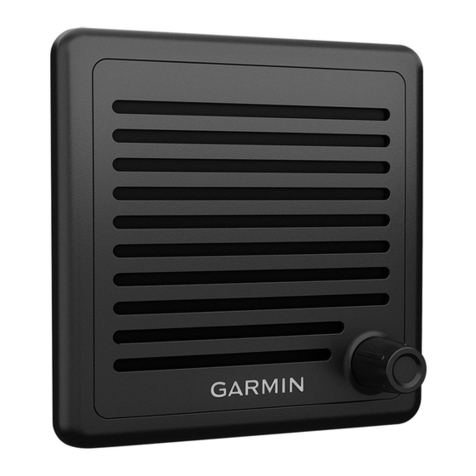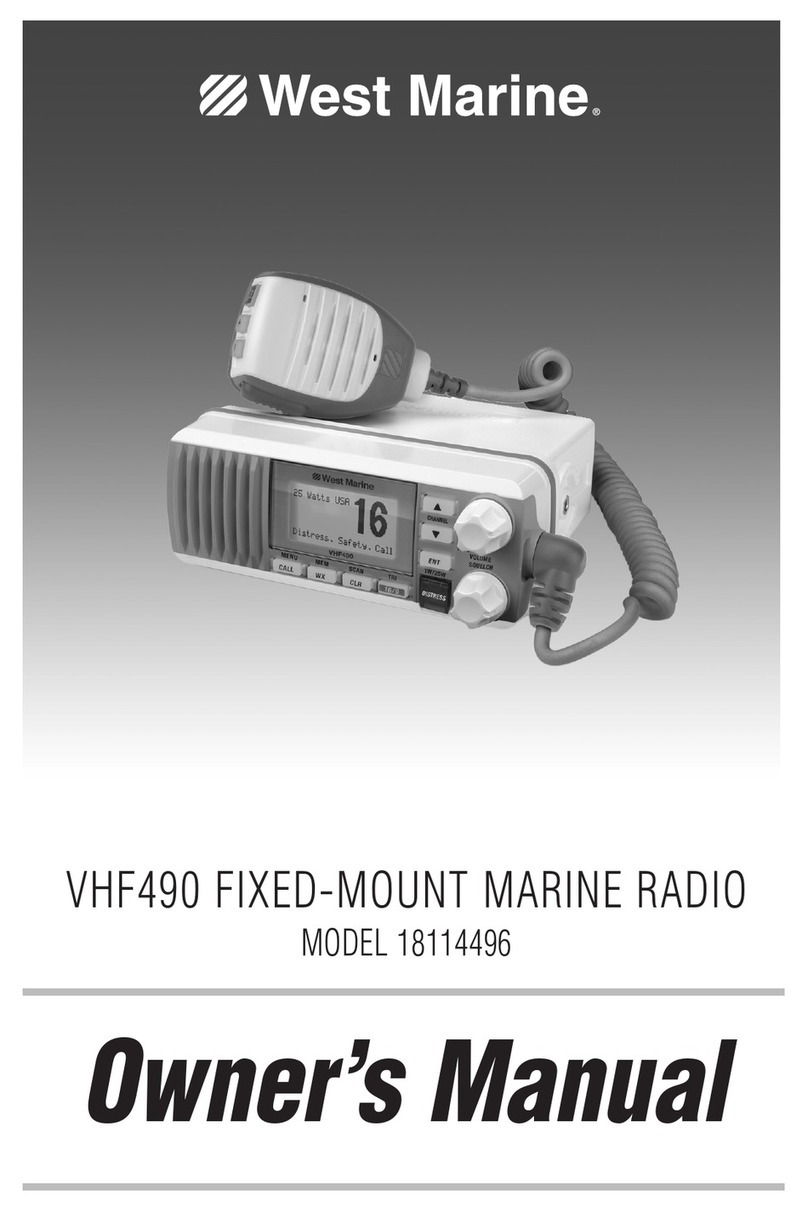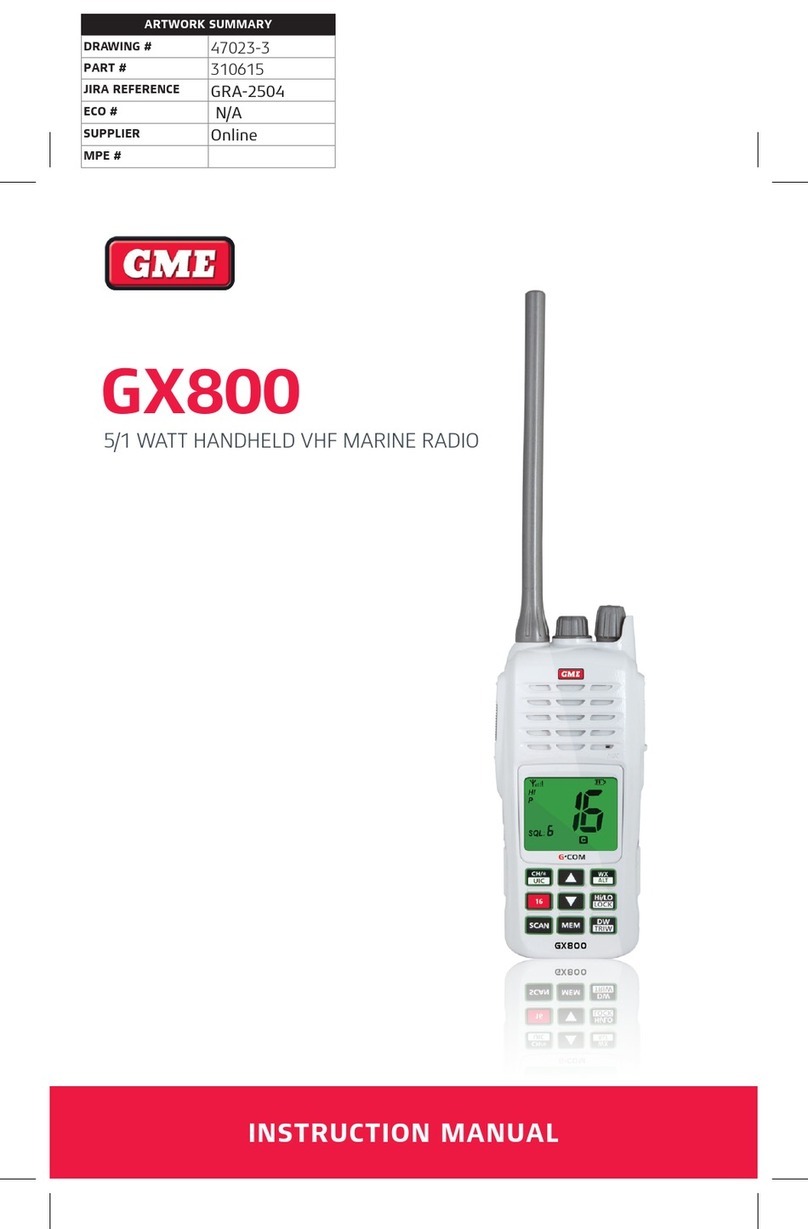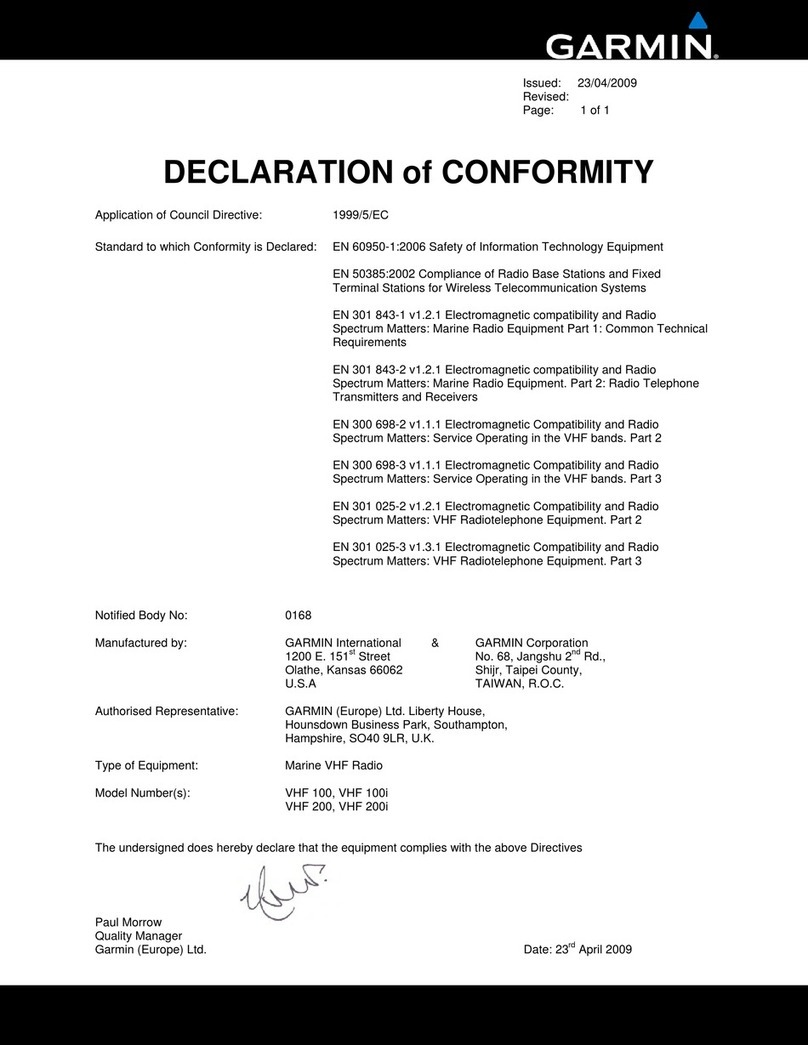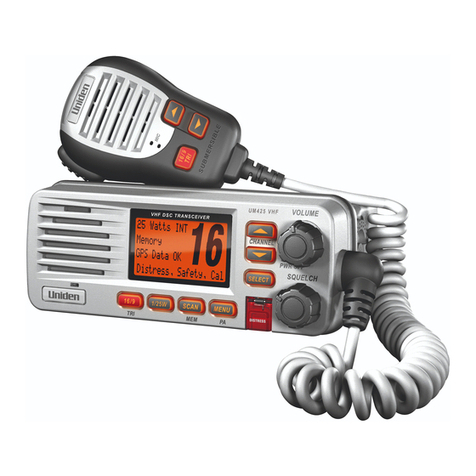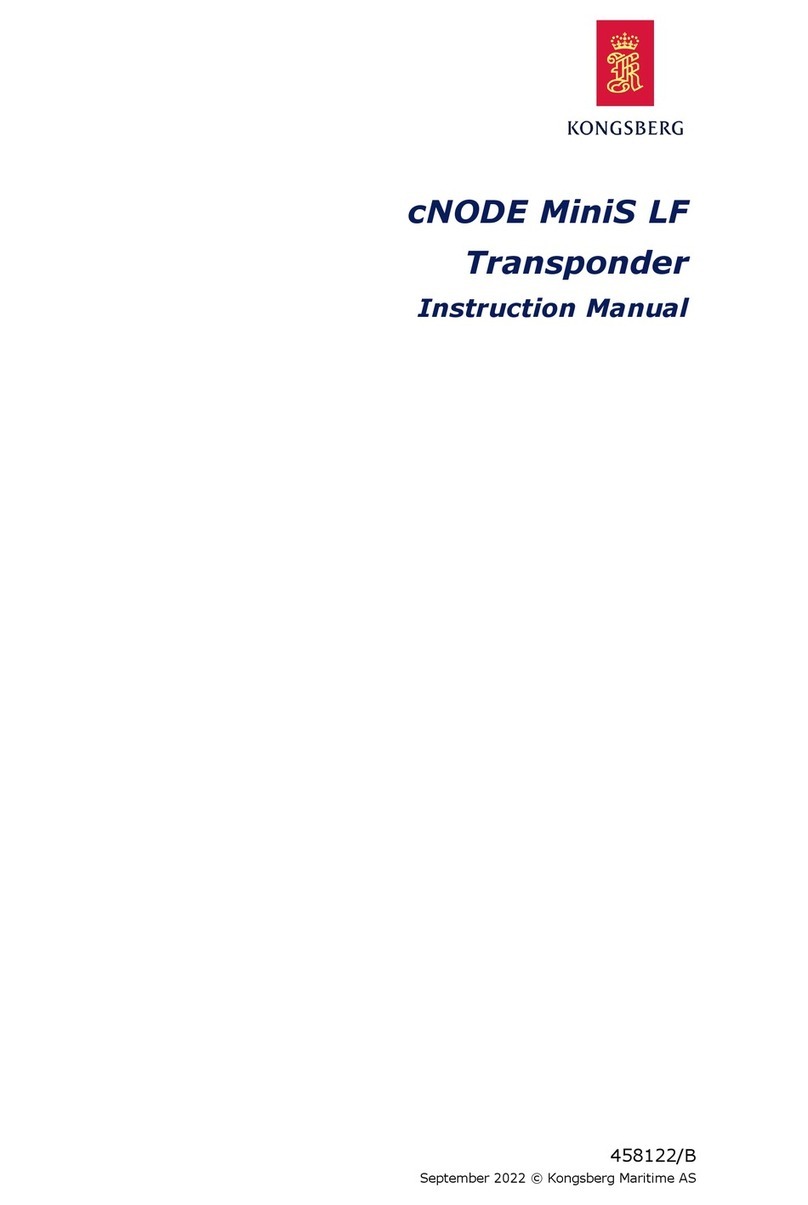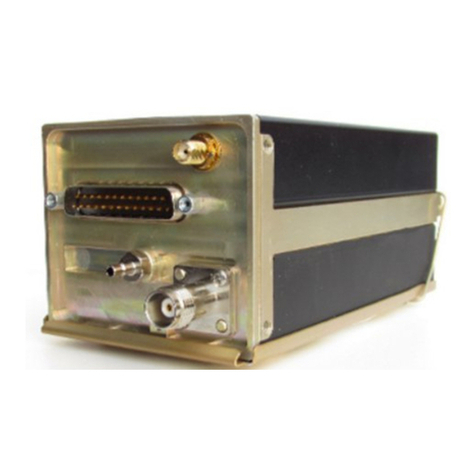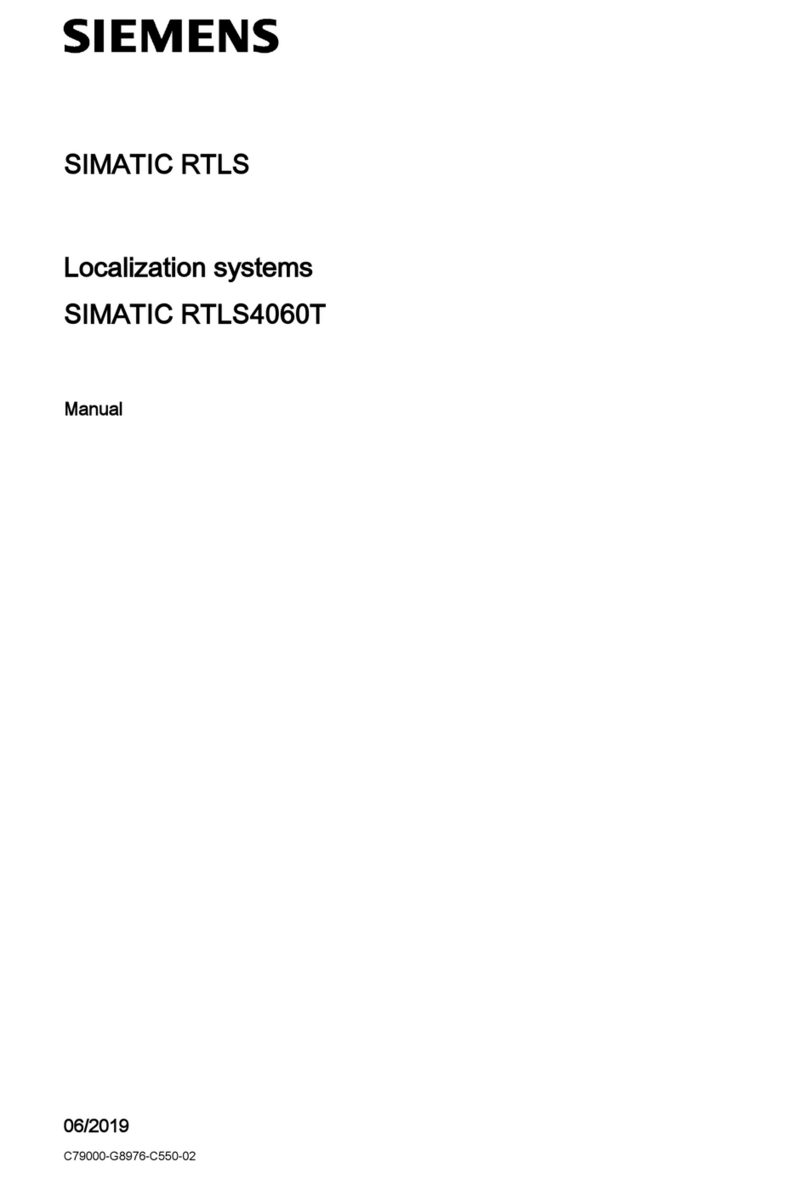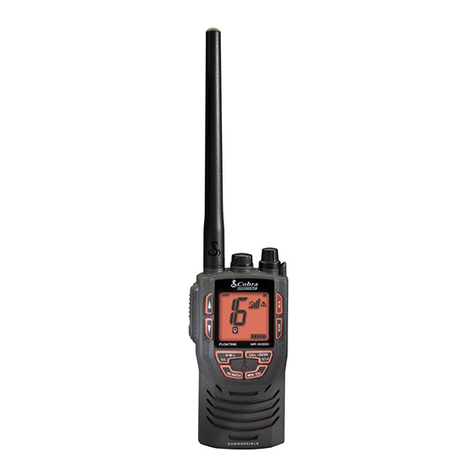Lowrance Link-8 VHF User manual

lowrance.com
ENGLISH
Link-8 VHF
Installation Instructions

Copyright © 2013 Navico
All rights reserved.
Lowrance® is a registered trademark of Navico
No part of this manual may be copied, reproduced, republished, transmitted or
distributed for any purpose, without prior written consent of Lowrance Electronics.
Any unauthorized commercial distribution of this manual is strictly
prohibited.
Lowrance Electronics may find it necessary to change or end our policies,
regulations, and special offers at any time. We reserve the right to do so without
notice. All features and specifications subject to change without notice.
All screens in this manual are simulated.
For free owner’s manuals and the most current information on this product, its
operation and accessories, visit our web site: www.lowrance.com
Navico Holding AS is not responsible for any changes or modifications to the radio
not expressly approved by Navico AS as the responsible entity for its compliance.
Modifications could void the user’s authority to operate the radio.
IMPORTANT SAFETY INFORMATION
Please read carefully before installation and use.
DANGER
This is the safety alert symbol. It is used to alert you to potential
personal injury hazards, Obey all safety messages that follow
this symbol to avoid possible injury or death.
WARNING WARNING indicates a potentially hazardous situation which, if
not avoided, could result in death or serious injury
CAUTION CAUTION indicates a potentially hazardous situation which, if
not avoided, could result in minor or moderate injury.
CAUTION
CAUTION used without the safety alert symbol indicates a
potentially hazardous situation which, if not avoided, may result
in property damage.
Lowrance - Link-8 Installation Instructions2

Lowrance - Link-8 Installation Instructions 3
Table of Contents
1 Installation preparation ................................................................................6
1.1 Checklist.................................................................................................................................................6
1.2 Tools needed for installation..........................................................................................................6
2 VHF installation..............................................................................................7
2.1 Location requirements .....................................................................................................................7
2.2 LCD viewing angle .............................................................................................................................7
2.3 Choose an installation type ............................................................................................................7
2.3.1 Mounting bracket installation....................................................................................................8
2.3.2 Recessed installation .....................................................................................................................9
2.4 Link-8 dimensions........................................................................................................................... 10
2.5 Handset mic wall hanger.............................................................................................................. 11
3 VHF electrical installation............................................................................12
3.1 Connect the radio............................................................................................................................ 12
3.2 Wiring diagram - NMEA 2000...................................................................................................... 15
3.3 Wiring diagram - External speaker and hailer ....................................................................... 16
3.4 Wiring diagram - NMEA 0183 connections ............................................................................ 17
4 Setup your radio - Your user MMSI...............................................................18

MMSI and license information
You must obtain a user MMSI (Marine Mobile Service Identity) and enter it into your Link-8 in order
to use the DSC functions. Contact the appropriate authorities in your country. If you are unsure
who to contact, consult your Lowrance dealer.
The user MMSI is a unique nine digit number, similar to a personal telephone number. It is used on
marine transceivers that are capable of using DSC (Digital Select Calling).
Depending upon your location, you may need a radio station license for the Link-8. You may also
need an individual operator’s license.
Lowrance recommends that you check the requirements of your national radio communica-
tions authorities before operating DSC functions.
IMPORTANT:
1. DSC functions will not operate on the Link-8 until your MMSI has been entered. Refer to DSC
Setup section for details.
2. The radio channels installed into this Lowrance VHF radio may vary from country to country
depending upon the model and government or national communications authority regulations.
3. Navico recommends that you check the radio operating licensing requirements of your country
before using this Lowrance VHF radio. The operator is solely responsible for observing proper
radio installation and usage practices.
4. A DSC warning label is supplied with this LowranceVHF radio. To comply with FCC regulations,
this label must be axed in a location that is clearly visible from the operating controls of this
radio. Make sure that the chosen location is clean and dry before applying this label.
5. This radio is designed to generate a digital maritime distress call to facilitate search and rescue.
To be eective as a safety device, this radio must be used only within the geographic range of
a shore-based VHF marine Channel 70 distress and safety watch system.The geographic range
may vary but under normal conditions is approximately 20 nautical miles.
DISCLAIMER: It is the owner’s sole
responsibility to install and use the
instrument and transducers in a manner that
will not cause accidents, personal injury or
property damage. The user of this product is
solely responsible for observing safe boating
practices.
NAVICO HOLDING AS. AND ITS SUBSIDIARIES,
BRANCHES AND AFFILIATES DISCLAIM ALL
LIABILITY FOR ANY USE OF THIS PRODUCT
IN A WAY THAT MAY CAUSE ACCIDENTS,
DAMAGE OR THAT MAY VIOLATE THE LAW.
Governing Language: This statement,
any instruction manuals, user guides and
other information relating to the product
(Documentation) may be translated to,
or has been translated from, another
language (Translation). In the event of any
conflict between any Translation of the
Documentation, the English language version
of the Documentation will be the official
version of the Documentation.
This manual represents the Link-8 as at the
time of printing. Navico Holding AS. and its
subsidiaries, branches and affiliates reserve
the right to make changes to specifications
without notice.
Copyright © 2013 Navico Holding AS.
Lowrance© is a registered trademark of
Navico Holding AS.
Important safety information
Lowrance - Link-8 Installation Instructions4

RF Emissions notice
This equipment complies with FCC radiation exposure limits set forth for an uncontrolled environ-
ment. This device’s antenna must be installed in accordance with provided instructions; and it must
be operated with minimum 96 cm spacing between the antennas and all person’s body (excluding
extremities of hands, wrist and feet) during operation. Further, this transmitter must not be co-located
or operated in conjunction with any other antenna or transmitter.
FCC Statement
This device complies with Part 15 of the FCC Rules. Operation is subject to the following two condi-
tions: (1) this device may not cause harmful interference, and (2) this device must accept any inter-
ference received, including interference that may cause undesired operation.
Note: This equipment has been tested and found to comply with the limits for a Class B digital device,
pursuant to Part 15 of the FCC Rules.These limits are designed to provide reasonable protection against
harmful interference in a normal installation. This equipment generates, uses and can radiate radio
frequency energy and, if not installed and used in accordance with the instructions, may cause harmful
interference to radio communications. However, there is no guarantee that interference will not occur
in a particular installation. If this equipment does cause harmful interference to radio or television
reception, which can be determined by turning the equipment o and on, the user is encouraged to
try to correct the interference by one or more of the following measures:
Reorient or relocate the receiving antenna.
Increase the separation between the equipment and receiver.
Connect the equipment into an output on a circuit different from that to which the receiver is
connected.
Consult the dealer or an experienced technician for help.
A shielded cable must be used when connecting a peripheral to the serial ports.
Industry Canada Statement
This device complies with Industry Canada license-exempt RSS standard(s).
Operation is Subject to the following two conditions: (1) this device may not cause interference,
and (2) this device must accept any interference, including interference that may cause undesired
operation of the devise.
Le présent appareil est conforme aux CNR d’industrie Canada applicables aux appareils radio
exempts de licence.
L’exploitation est autorisée aux deux conditions suivantes : (1) l’appareil ne doit pa produire de
brouillage, et (2) l’utilisateur de l’appareil doit accepter tout brouillage radioélectrique subi, même
si le brouillage est susceptible d’en compromettre le fonctionnement.
CE Compliance Statement
This product complies with CE under R&TTE directive 1999/5/EC. The relevant Declaration of Con-
formity is available in the following website under model documentation section:
http://www.lowrance.com.
Lowrance - Link-8 Installation Instructions 5
Other manuals for Link-8 VHF
1
Table of contents
Other Lowrance Marine Radio manuals
